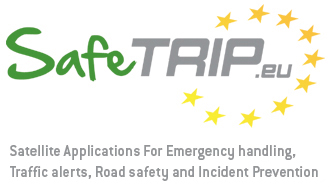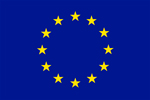Introduction
The Communication Infrastructure
The SafeTRIP Middleware
The On-Board Unit (OBU)
Case Studies
Business Models for SafeTRIP Platform

What is S-band?
The SafeTRIP platform concept is mainly based on communication through satellite link. The satellite frequency used is at around 2GHz and this spectrum is indicated as S-band.
Regulatory Aspects
Providing satellite and ground radio communications services is governed by a complex framework of regulations. The operation of satellite systems in orbit is governed by international agreements between sovereign countries aimed at managing the interference between such satellite systems and, where applicable, terrestrial systems. The rules for managing such interference and resolving any conflicts are set at the level of the International Telecommunications Union (ITU), an institution of the United Nations. The ITU rules for coordination between satellite systems are generally based on the “first-come, first-served” principle. ITU level coordination for S-band is indeed based on this principle. According to ITU rules, the S-band can be used for both mobile satellite services (MSS) and (terrestrial) mobile services (MS).

Figure 1: S-band spectrum allocation
Thanks to a very important decision of the European Commission (Commission Decision 2007/98/EC), the use of the S-band for MSS has priority over MS, meaning that the latter can only be deployed on a so-called non-interference basis, or as the complementary ground component (CGC) of an MSS system subject to a number of operating constraints. Although in general the rights of use of spectrum in a given country (i.e., the rights to communicate with a satellite system or with a terrestrial network) are granted by the national regulatory authorities (NRAs) of those individual countries, the European Commission decided that in the specific S-band case, the 27 Member States of the European Union grant such licenses in a harmonized way, i.e. within the same time frame and according to the same set of minimum rights and obligations of the licensees: the use of the satellite is seen as the key to improve the coverage of rural and less-developed areas, providing wireless and broadband communication everywhere to bridge the digital divide. In 2010 the European Commission granted, at the end of a two step selection process, half of the available S-band spectrum for MSS to 2 of the 5 candidates that filed for the authorization. One of them is Inmarsat Ltd, satellite operator; the other one is Solaris Mobile Ltd, born as joint-venture of two other important Satellite operators in Europe, i.e. SES-Astra and Eutelsat.
Technical Aspects
The first commercial S-band payload serving Europe arrived with the satellite EUTELSAT 10A (previously known as W2A), launched by Eutelsat in April 2009. The satellite embarks a large deployable antenna of 12 meters diameter. The payload was designed to provide six linguistic beams covering most part of Europe, each beam providing 60 dBW EIRP over 5 MHz, in circular polarization. The large antenna and the circular polarization allow communicating to ground (Earth) with small omni-directional antennas.

Figure 2: Eutelsat 10A and its S-band antenna
EUTELSAT 10A is a geostationary (GEO) satellite, as most of the other satellites used in Europe for broadcasting satellite TV to millions of houses; these classical satellite TV systems require satellite dishes of 60cm to 1m20 to be pointed to the satellite.
The S-band, with the large antenna on the satellite and the circular polarization, allows communicating on ground (Earth) with small omni-directional antennas: this means that antennas of few centimetres can move in any direction and continue receiving the satellite signal.

Figure 3: Satellite dish antenna and small omni-directional antenna
The Mission
S-band projects are on-going, notably in US and India, and they can share the same technology approach as the European one. The S-band is optimized for content delivery and two-way communications for small mobile terminals, vehicular and handhelds. The substantial amount of bandwidth and its wide availability in Europe, make the S-band able to support broadcasting services towards large audiences and ensuring two-way links for data exchange from mobile terminals to processing centres.
The flexibility and power of the S-band open up a wide range of applications for the general public, they also present important development opportunities for business and automotive applications. The technology can be used for issuing distress beacons in the event of an accident and delivering access to real-time information on road traffic delays or weather conditions. These services, interfaced with navigation devices which are increasingly present in every new vehicle will enable drivers to access in real-time local information providing invaluable add-ons.
The deployment of mobile satellite services has the advantage of immediately reaching pan-European coverage as soon as the satellite component is deployed. In addition, the use of complementary ground components (CGC) is foreseen to improve the availability of the services in urban areas where the direct satellite link is often shadowed by building blocks. With such hybrid systems the service availability approaches the 100% in terms of territorial coverage. It is in particular in open areas with low density population and few agglomerations that in case of car accident the danger is increased by the lack of witness/human presence to assist or rescue the victims.



